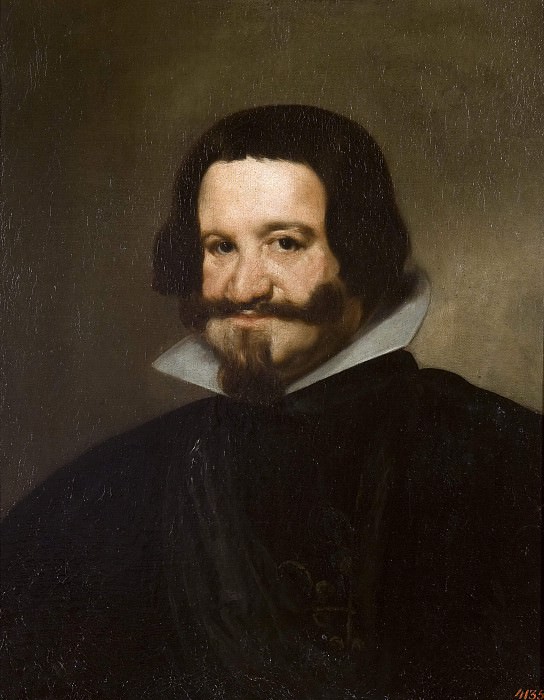Count Olivares Diego Rodriguez De Silva y Velazquez (1599-1660)
Diego Rodriguez De Silva y Velazquez – Count Olivares
Edit attribution
Download full size: 2782×3584 px (1,2 Mb)
Painter: Diego Rodriguez De Silva y Velazquez
Location: Hermitage, St. Petersburg (Эрмитаж).
Velázquez’s range of interests was surprisingly wide: genre scenes, historical and religious themes, and mythological subjects. All styles of painting the artist tried, until he settled on portraits. In the manner of writing in the early period, the influence of Caravaggio is clearly visible. However, rather quickly the artist crystallized his own style, well recognized by connoisseurs. But the ability to discern behind the external grandeur of self-interest and human vices remained. A sense of harmony, subtlety and richness of color inherent in any of the master’s paintings.
Description of the painting "Portrait of Count Olivares" by Diego Velázquez
Velázquez’s range of interests was surprisingly wide: genre scenes, historical and religious themes, and mythological subjects. All styles of painting the artist tried, until he settled on portraits. In the manner of writing in the early period, the influence of Caravaggio is clearly visible. However, rather quickly the artist crystallized his own style, well recognized by connoisseurs. But the ability to discern behind the external grandeur of self-interest and human vices remained.
A sense of harmony, subtlety and richness of color inherent in any of the master’s paintings. Deep insight into the character of the model, hidden desires and carefully concealed weaknesses allowed the artist to create stunningly truthful paintings.
The artist accomplished what he set out to do - to fill with life the schemes of ceremonial portraits. Working for a long time at the court of Philip IV, the master became famous and many nobles sought to order him a portrait, so that there was no shortage of models.
In the portrait of Count Olivares, the artist fully embodied his aspirations - he breathed life into the faces of ceremonial portraits. The Count is depicted in deliberately modest clothing - black with a white collar. Against a dark background, with dark hair and beard, he could have dissolved. But his puffy face and strikingly lively eyes would not allow it. In them hides the steely gleam of a calculating politician.
The serene expression on his face cannot hide the dictator’s brushiness. The portrait was painted at the peak of Olivares’ fame and influence, but the artist managed to reveal the inner essence and show the hidden vices of the nobleman.
Кому понравилось
Пожалуйста, подождите
На эту операцию может потребоваться несколько секунд.
Информация появится в новом окне,
если открытие новых окон не запрещено в настройках вашего браузера.
You need to login
Для работы с коллекциями – пожалуйста, войдите в аккаунт (open in new window).




















COMMENTS: 1 Ответы
актера в фильме "Капитан Алатристе" очень похожего подобрали.
You cannot comment Why?
Perhaps it’s a close up of a painting of a man with a beard and wearing a black coat with a white collar and a black shirt.